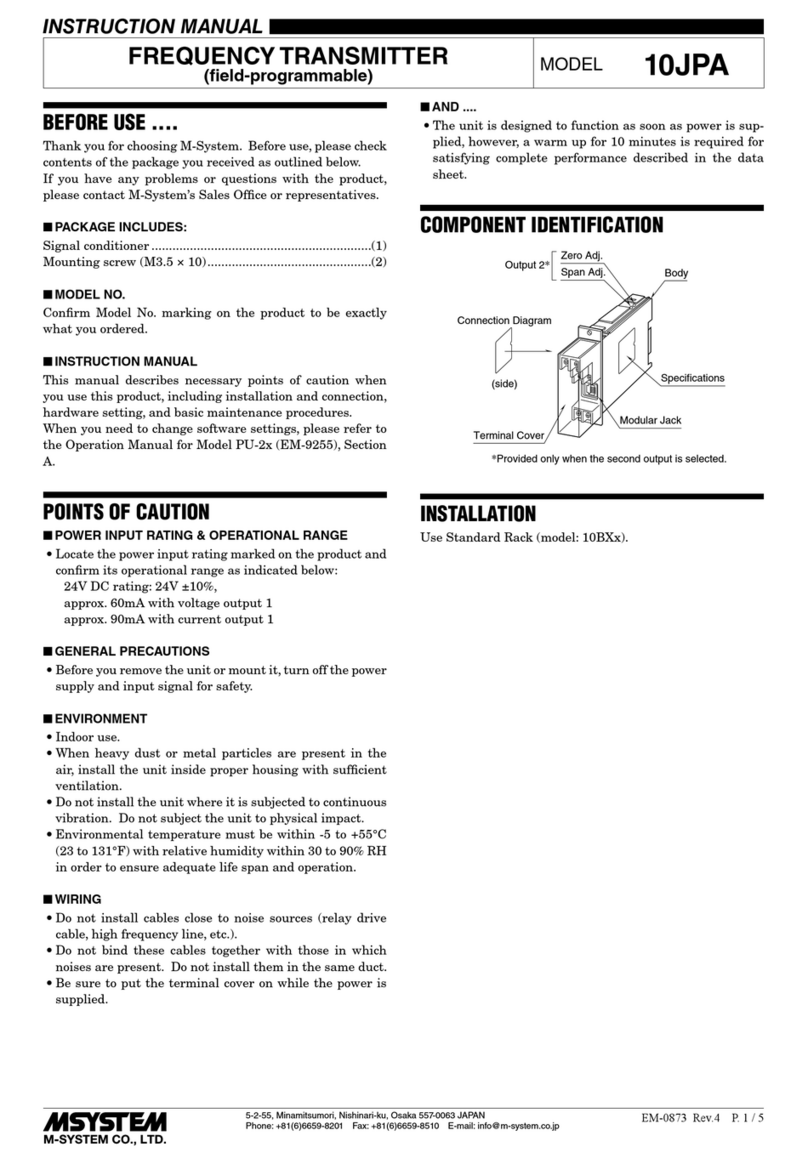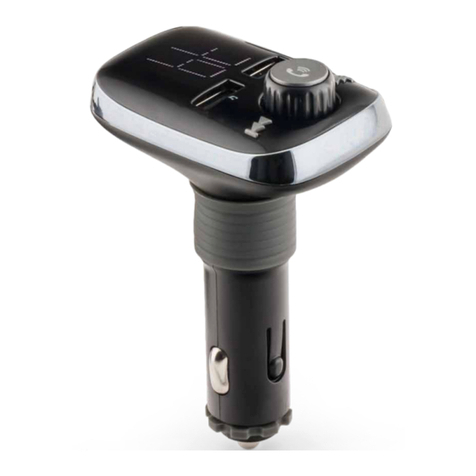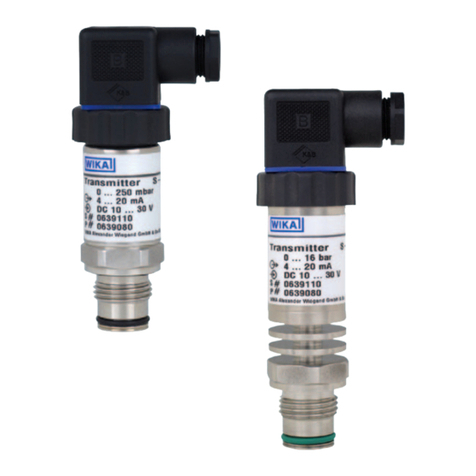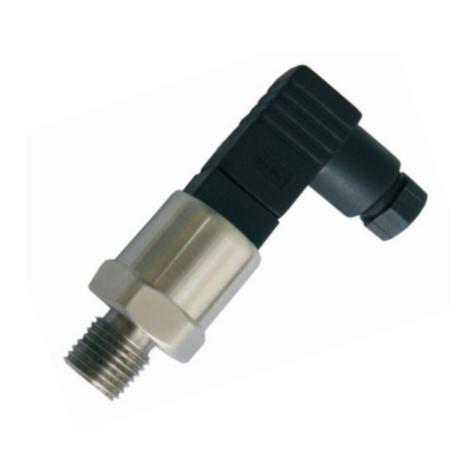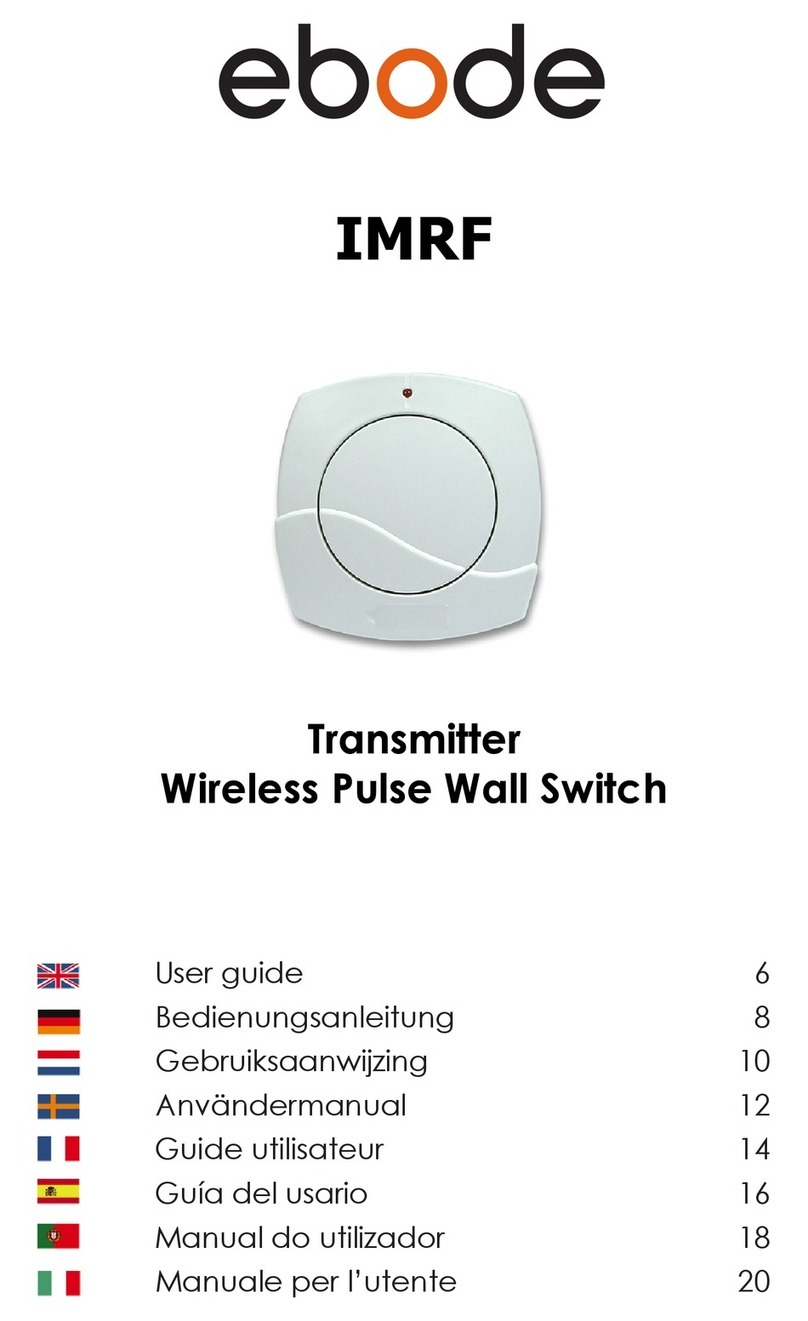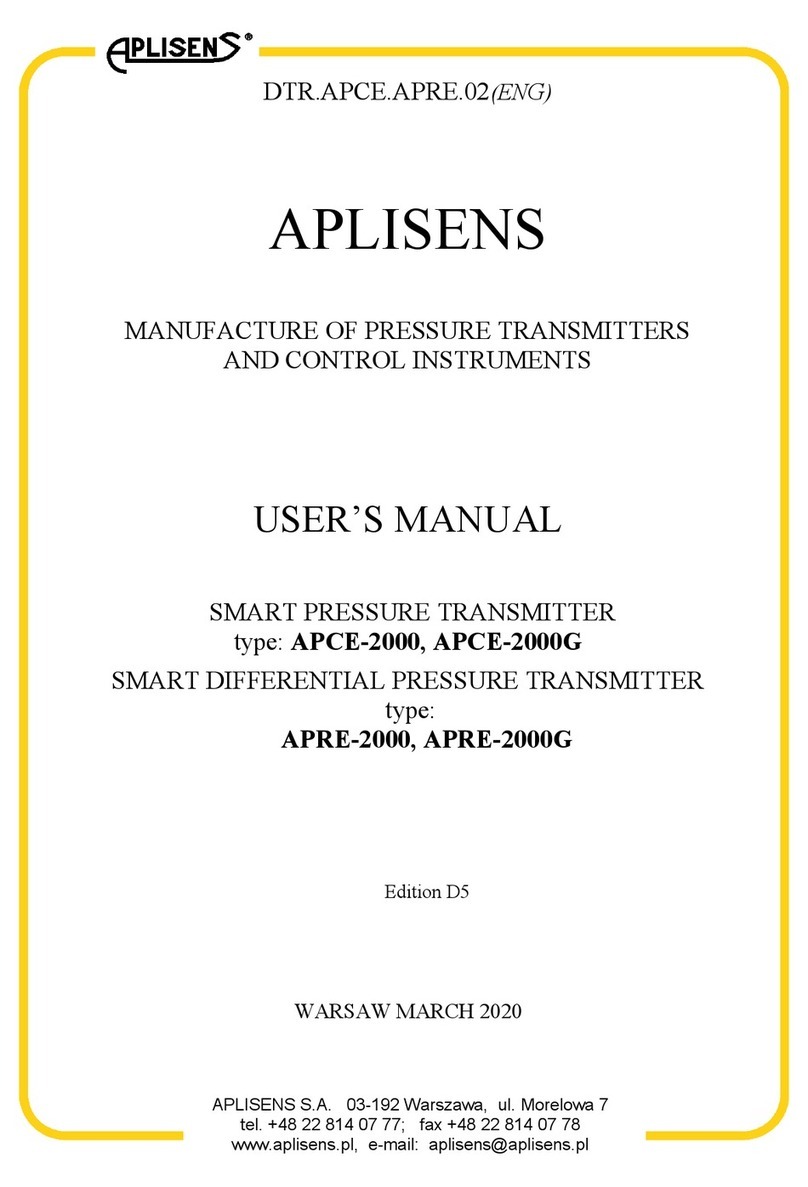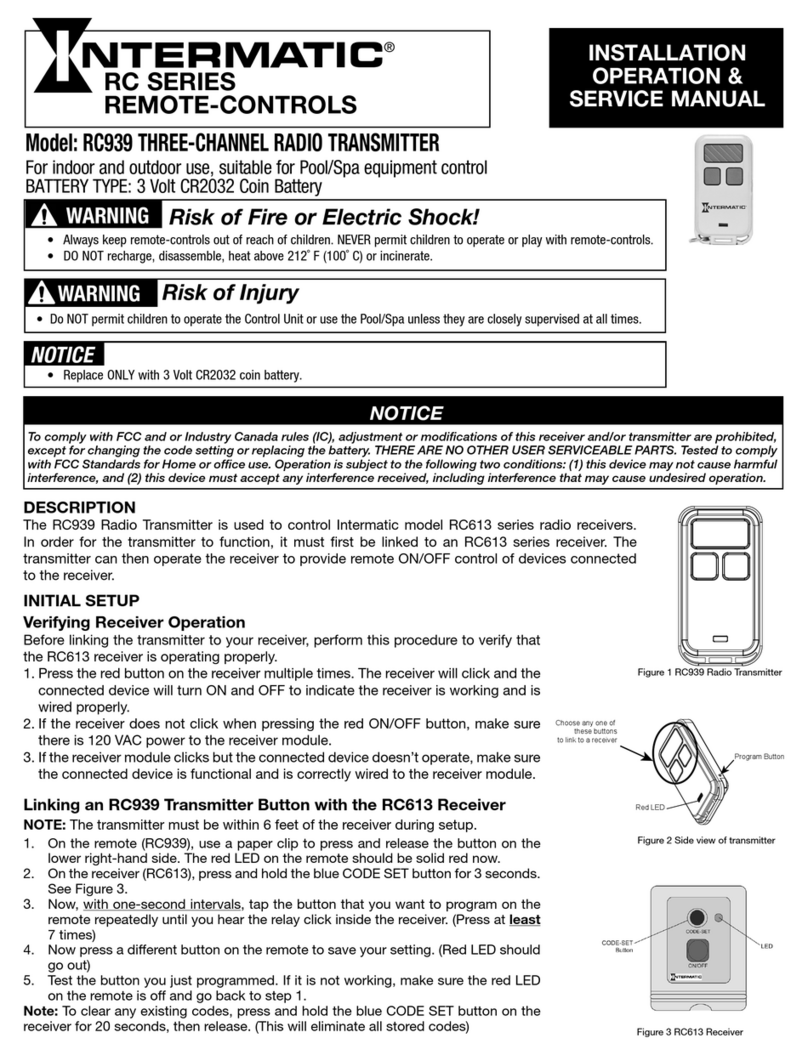Festo SDAS-MHS User manual

Translation of the original instructions
1 About this document
This document describes the use of the above-mentioned product. For detailed
specifications on the product, a complete description, the software for the device
(IODD) and the declaration of conformity èwww.festo.com.
1.1 Further applicable documents
All available documents for the product èwww.festo.com/pk.
2 Safety
2.1 Intended use
The position transmitter SDAS-MHS is intended for monitoring the piston stroke.
Only use the position transmitter for suitable drives from Festo
èwww.festo.com/catalogue. Avoid positioning magnetic objects in close prox-
imity to the position transmitter.
2.2 General safety instructions
– Only use the product in original status without unauthorised modifications.
– Only use the product if it is in perfect technical condition.
– Take into consideration the ambient conditions at the location of use.
– Observe limit values .
Return to Festo
– Consult your regional Festo contact.
2.3 Area of application and approval
NOTICE!
CE declaration of conformity èwww.festo.com/sp.
2.4 Training of skilled personnel
Installation, commissioning, maintenance and disassembly should only be con-
ducted by qualified personnel.
3 Service
Contact your regional Festo contact person if you have technical questions
èwww.festo.com.
4 Product overview
4.1 Design
1Connecting cable
2M8 plug, rotatable
3Red LED: status display
4Yellow LED: switching status dis-
play
5Marking: centre of the sensing
range
6Capacitive operating key
7Retaining screw
Fig. 1 Design of SDAS-MHS
5 Function
The position transmitter detects the magnetic field of the piston magnet and con-
tinuously senses the piston movement in the sensing range. The position trans-
mitter can be operated in one of the following operating modes:
– Cylinder switch with 2 programmable switching points (standard operation) .
– Position transmitter with IO-Link communication .
In the case of active IO-Link communication (IO-Link master required), the SDAS-
MHS switches automatically into the position transmitter operating mode.
5.1 Cylinder switch operating mode
In the cylinder switch operating mode, 2 switching points can be programmed
within the sensing range.
– Operation using capacitive operating key
– Switching logic: normally open (NO)
– Output signal 24VDC (PNP or NPN)
– Marking on the housing indicates the centre of the sensing range.
1Electrical output 1 2Electrical output 2
Fig. 2 Application example: Cylinder switch operating mode
5.2 Position transmitter operating mode (IO-Link)
In the position transmitter operating mode, programmed switching signals and
the continuous position values (digitally coded analogue values) are transferred.
– Programming via IO-Link
– Device description file IODD èwww.festo.com/sp.
– Capacitive operating key is deactivated.
– Cylinder switches or window comparators or hysteresis comparators can be
programmed individually on 4 switching channels.
– The continuous position values are always transferred in parallel with and
independently of the position value output of the switching channels.
– Each channel can be set to be normally closed (NC) or normally open (NO).
– Data transmission is serially and digitally coded in the IO-Link protocol.
– Process data: 12 bit for position data and 4 bit for switching channels
– Unshielded standard cables of up to 20m in length can be used.
– Parameters and functions in accordance with Smart Sensor profile
– Support for the optional functions “Block parameterisation” and “Data
storage”
8096677
SDAS-MHS
Position transmitter
8096677
2018-07a
[8096679]
Instructions| Operating
Festo AG & Co. KG
Ruiter Straße 82
73734 Esslingen
Germany
+49 711 347-0
www.festo.com

– The direction of increase of the process data values (PDV) can be inverted. As
delivered: lowest PDV at cable end
Output signal (PDV): direction of
increase inverted
Output signal (PDV): direction of
increase as delivered
1PDV (position data values)
2SSC1 (switching signal channel)
3SSC2
4SSC3
5SSC4
Fig. 3 Application example: Position transmitter operating mode
6 Installation
6.1 Electrical installation
WARNING!
Risk of injury due to electric shock.
• For the electrical power supply, use only PELV circuits in accordance with IEC
60204-1/EN 60204-1 (Protective Extra-Low Voltage, PELV).
• Observe the general requirements of IEC 60204-1/EN 60204-1 for PELV cir-
cuits.
• Only use voltage sources that ensure a reliable electric separation from the
mains network in accordance with IEC 60204-1/EN 60204-1.
1. Switch off operating voltage.
2. Connect the M8 plug to the connecting cable of the higher-order controller
è Fig.5,4.
– The tightening torque for the union nut of the plug: max. 0.3Nm
Fig. 4 Circuit diagram
Pin Wire colour Allocation Plug
1 Brown (BN) Operating voltage
+24VDC
2 White (WH) Switching output 2
3 Blue (BU) 0V
4 Black (BK) Switching output 1
M8x1, 4-pin
Tab. 1 Pin allocation of plug connection for cylinder switch operating mode
Pin Wire colour Allocation Plug
1 Brown (BN) Operating voltage
+24VDC
2 White (WH) Not used
3 Blue (BU) 0V
4 Black (BK) IO-Link
M8x1, 4-pin
Tab. 2 Pin allocation of plug connection for position transmitter operating mode
6.2 Mechanical installation
1Hexagon socket spanner
2Retaining screw
3T-slot (profile slot 8)
4M8 plug
Fig. 5 Mechanical installation
1. Insert the position transmitter into the T-slot of the drive.
2. Move the piston into an end position of the application.
3. Push the position transmitter in the direction of the piston until the red LED
goes out.
4. Tighten the hexagon socket-head bolts (spanner size: 1.5mm).
– Tightening torque: max. 0.5Nm
7 Commissioning
• Switching on the operating voltage.
ÄThe position transmitter is ready for operation.
7.1 Cylinder switch operating mode
The position transmitter is parameterised once it is installed.
• Be mindful of the surface temperature of the capacitive operating key and of
the drive.
• Avoid contamination and moisture on the position transmitter.
7.1.1 Activating set-up mode
• Press the capacitive operating key 3 times within 3s.
ÄSet-up mode active: yellow and red LEDs flash alternately.
If programming is not completed within 60s of starting set-up mode, the SDAS-
MHS automatically switches into the operating mode.
7.1.2 Setting switching points
1Electrical output 1 2Electrical output 2
Fig. 6 Application example: Cylinder switch operating mode
1. Move piston to the desired position for switching output 1, within the sensing
range.
ÄRed LED OFF .
2. Activate set-up mode.
3. To assign the position for switching output 1, press the capacitive operating
key 1 time.
ÄThe yellow LED flashes 1 time.
4. Press the capacitive operating key.
ÄSwitching point 1 is defined. Operating mode is active.
5. Move piston to the desired position for switching output 2, within the sensing
range.
ÄRed LED OFF .
6. Activate set-up mode.
7. To assign the position for switching output 2: press the capacitive operating
key 2 times.
ÄThe yellow LED flashes 2 times.

8. Press the capacitive operating key.
ÄSwitching point 2 is defined. Operating mode is active.
7.1.3 Menu structure
Fig. 7
LED/operating key Meaning
N x Press the capacitive operating key (e.g.: 3x); max. 1s pause
between 2 consecutive presses
3s Hold the capacitive operating key pressed for at least 3s.
LED illuminated / LED flashing / LED OFF (e.g.: yellow LED)
1) A switching point can only be set when the red LED is OFF. When the
red LED is flashing at 1.5Hz, the magnet is located in the region of
the operational reserve. It is not possible to set a switching point.
The operational reserve is required for the safe setting of switching
points in the edge region. When the red LED is illuminated, the mag-
net is outside the sensing range. It is not possible to set a switching
point.
Tab. 3 Explanation of symbols
7.2 Position transmitter operating mode
In the position transmitter operating mode, commissioning is carried out in the
higher-order controller of the IO-Link master.
1. Load the device description file IODD (èwww.festo.com/sp) into the inter-
preter of the IO-Link master.
2. For general information on the IO-Link specification and for the Smart Sensor
profile èwww.io-link.com.
3. Connect the position transmitter to the IO-Link master as shown in the circuit
diagram .
4. Program the position transmitter. Observe the instructions in the operating
instructions for the IO-Link master.
Errors during commissioning are displayed on the user interface of the IO-Link
master. Programming is blocked.
8 Operation
8.1 Cylinder switch operating mode
The position transmitter is parameterised once it is installed.
• Be mindful of the surface temperature of the capacitive operating key and of
the drive.
• Avoid contamination and moisture on the position transmitter.
LED Meaning
Both LEDs OFF: status display.
– Piston within the sensing range
– No switching output set
Yellow LED illuminated: switching status display.
– Switching output 1 or switching output 2 is active.
Red LED illuminated: status display.
– Piston outside the sensing range
Red LED flashing at 1.5Hz: status display.
– Piston is located in the region of the operational reserve.
Tab. 4 LED displays in the cylinder switch operating mode
8.2 Position transmitter operating mode
LED Meaning
Yellow LED flashing at 1Hz: ready status.
– IO-Link communication is active.
Red LED illuminated and yellow LED flashing: status display.
– IO-Link communication is active.
– Piston outside the sensing range
Tab. 5 LED displays in the position transmitter operating mode
9 Fault clearance
Errors during IO-Link operation are displayed on the user interface of the IO-Link
master. The IO-Link switching output is not blocked.
9.1 Diagnostics via LED
LED Possible cause Remedy
Yellow Red
Both LEDs OFF
Power supply, connecting cable or sensor is
faulty/defective (there may not be a fault ).
– Check power
supply.
– Check connecting
cable, replace if
necessary.
– Replace device.
Permanently:
Short circuit/overload at the switching output
– Eliminate short
circuit/overload.
Yellow LED flash-
ing at 3Hz
For 3s, after pressing the capacitive operating key:
capacitive operating key is blocked.
– Cancel the block
on the capacitive
operating key
using the IO-Link.
Red LED flashing
at 3Hz
Hardware error – Switch the power
supply off and
then on again.
– Replace device.
Tab. 6 Diagnostics via LED display

9.2 General malfunctions
Fault description Cause Remedy
Drive is not suitable. Use a suitable drive.
Device is faulty. Replace device.
No power supply or impermiss-
ible operating voltage.
Comply with operating voltage
range.
Short circuit or overload at the
output
Eliminate short circuit/over-
load.
Magnetic objects in close prox-
imity to the position transmitter
Avoid positioning magnetic
objects in close proximity.
Sensor/drive rotated by 180°
after initial commissioning.
Reset to factory settings (using
the operating key or via IO-
Link).
Incorrect or unexpected signals
at the output
Incorrect or unexpected signals
during initial commissioning on
grippers or in attachments
which are partly ferromagnetic
On initial commissioning, move
gripper jaws or pistons within
the sensing range (e.g. at both
end positions).
Short circuit or overload at the
output
Eliminate short circuit/over-
load.
Switching output does not
switch in accordance with the
settings. Device is faulty. Replace device.
Settings cannot be edited. Access protection is active. Unblock operating key (only
possible via IO-Link).
Capacitive operating key does
not react to input
Dirt or moisture on the position
transmitter
Wipe position transmitter with a
dry cloth.
Tab. 7
10 Disassembly
1. Switch off the power supply.
2. Disconnect connections from the position transmitter.
3. Undo the hexagon socket-head bolts è Fig.5.
4. Remove the position transmitter from the T-slot of the drive.
11 Technical data
For the complete technical data èDescription of SDAS-MHS.
SDAS-MHS
Operating voltage DC [V] 10…30
Ambient temperature [°C] –40…+80
Degree of protection (to
EN60529)
IP65/IP68
Tab. 8 Technical data
Other manuals for SDAS-MHS
2
Other Festo Transmitter manuals
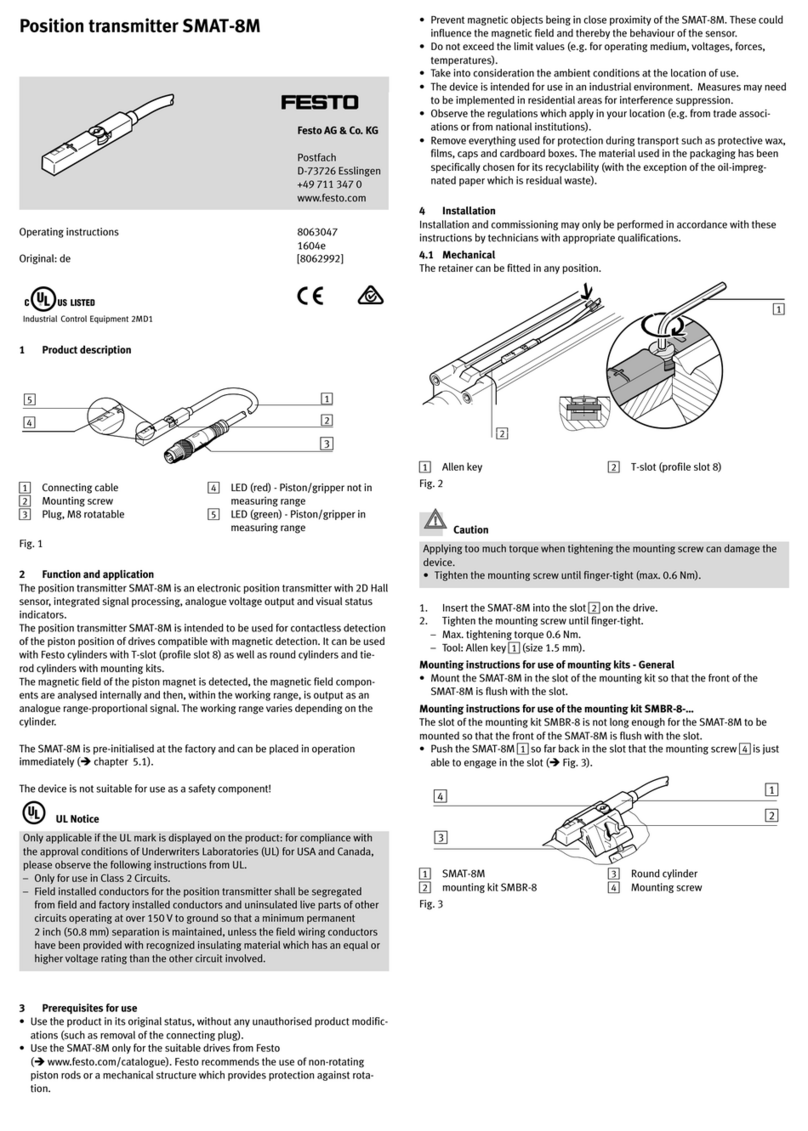
Festo
Festo SMAT-8M User manual

Festo
Festo SDAT-MHS SA Series Reference guide
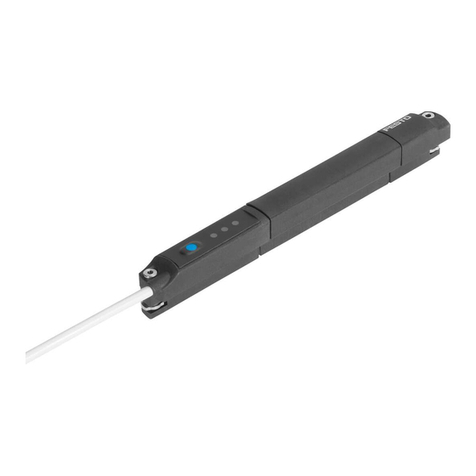
Festo
Festo SDAT-MHS-SV Series User manual
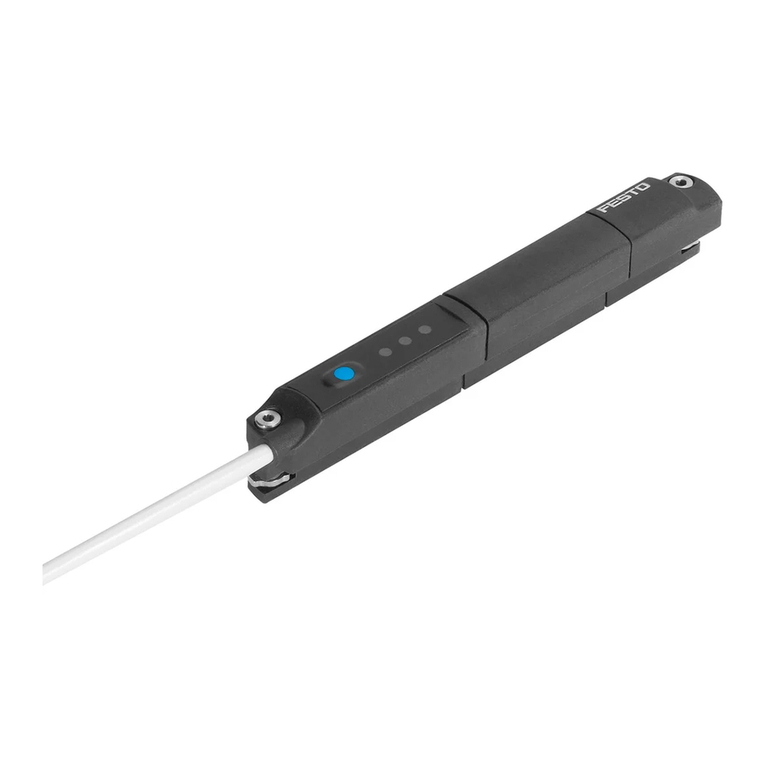
Festo
Festo SDAT-MHS User manual

Festo
Festo SDAS-MHS User manual

Festo
Festo SDAT-MHS-SV Series Reference guide
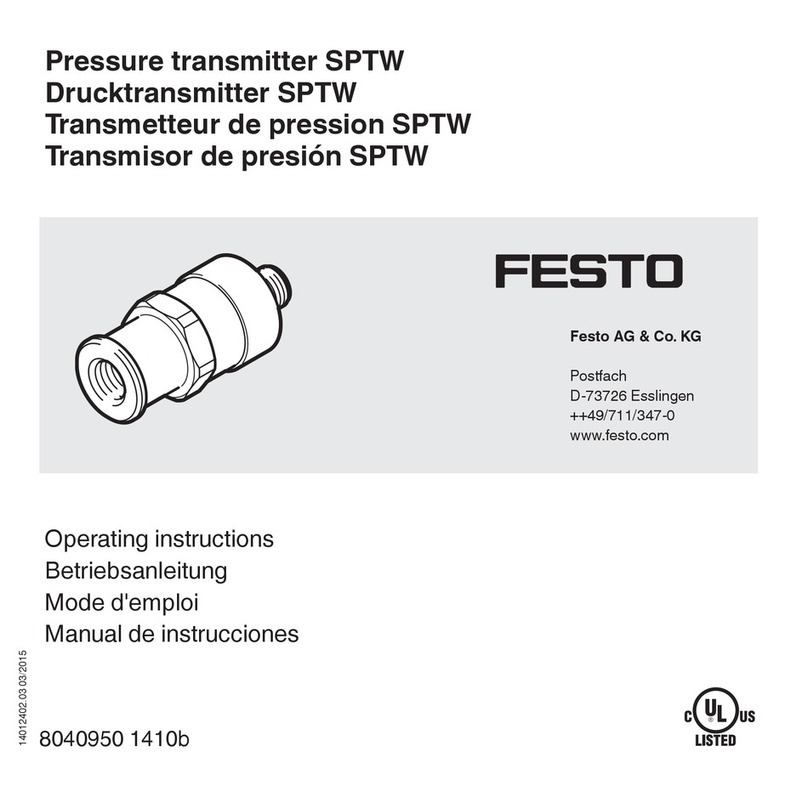
Festo
Festo SPTW Series User manual

Festo
Festo SDAT-MHS User manual
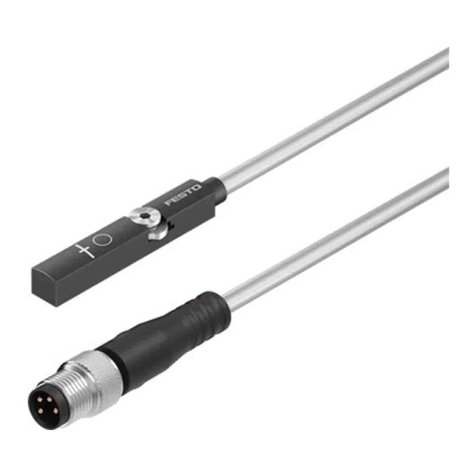
Festo
Festo SDAS-MHS User manual
Popular Transmitter manuals by other brands

THUNDER TIGER
THUNDER TIGER 2ADKO-A-8-200 user manual

Advantech
Advantech WISE-4220 Series user manual
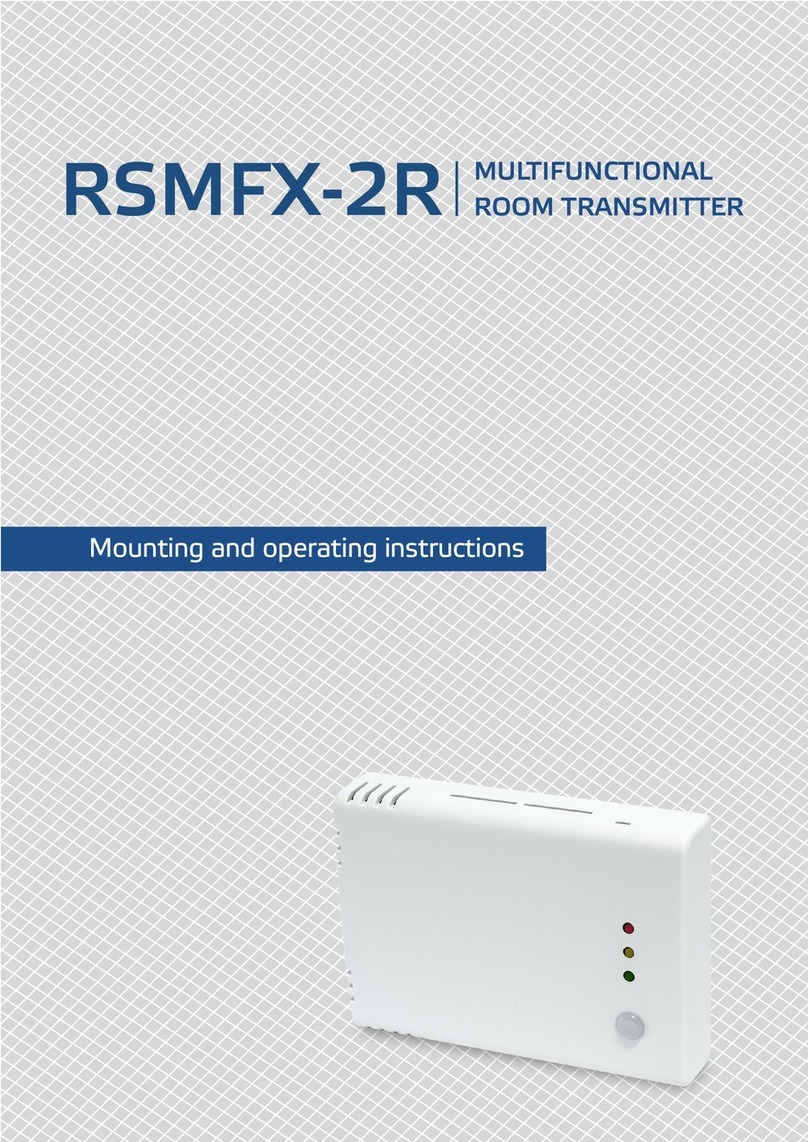
Sentera Controls
Sentera Controls RSMF-2R Series Mounting and operating instructions

Redfox
Redfox Sidekick user manual

Avtek
Avtek Share quick guide

Honeywell
Honeywell ADEMCO 5819 Installation and setup guide

